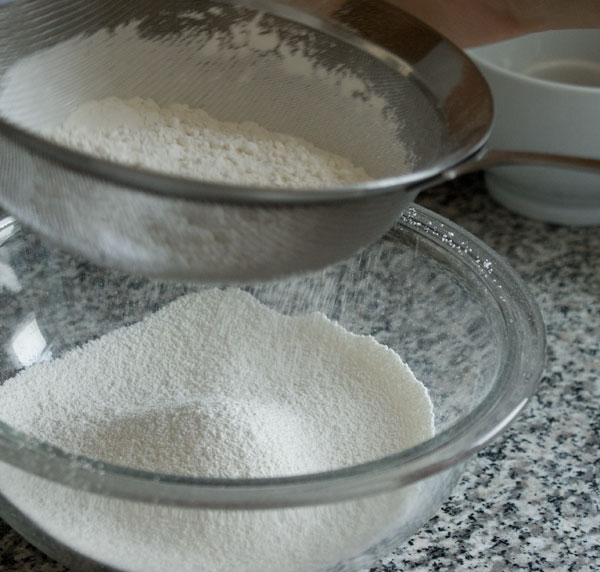Flour: a staple ingredient in every baker's cabinet. Originally derived from the word 'flower' or as they say in french, 'fleur', its suppose to mean 'the finest', and quite rightly so. After all, its soft, powdery and silky smooth to the touch. Sounds lovely doesn't it? Yea well just wait until you spill it onto the floor.
But anyway, moving on... The most common type of flour is wheat flour, but even then there are different types and varieties. To make things simple, lets break it down into two groups: those high in gluten content and those low in gluten content. Gluten simply refers to the toughness or elasticity of the flour. Its what gives your baked goods its shape, volume and structure. Of course there are alternatives to using flour but the results rarely ever turn out the same. There are also recipies out there that don't need flour at all so do check em' out (e.g. See Flourless Chocolate Cake - looks good ain't it? Been wanting to make that for a while now!).
So the most common type of flour is all purpose flour (aka plain flour). You can easily get it at any supermarket and in some cases, your local ma ma stall. It has an average gluten content of around 9% to12% which makes it very, very versatile and will easily fulfill most household baking needs. Its usually combined with baking powder or baking soda (see pictures below) - leavening agents that serve to further 'lift' up the texture and volume of the final product during baking. Personally, I always make it a point to have an extra bag around the house.
Self-rising flour is basically all-purpose flour with added salt and baking powder. I call it the 'lazy' flour because you don't need to sift in any extra leavening agents and its good for busy bakers (like me). You can easily make your own self-raising flour as well. Simply mix 1 cup all-purpose flour with 1 1/4 teaspoon baking powder and a pinch of salt. An important point to note is that store-bought self-raising flour will lose its leavening properties if left out in the open too long so try to use it up ASAP once opened yea?
Bread flour on the other hand is a high protein flour made from hard wheat. It has a very high gluten content, between 10% and 13%, making it excellent for products that require more texture and 'mouthfeel' (i.e. chewiness). As the name goes, it is commonly used for making breads, buns or even cookies (think soft, chewy cookies. Mmmm....). Personally I haven't had much experience using it but I will update you guys in the future on this.
Finally, Cake flour is a finely milled white flour made from soft wheat. It has very low gluten content, between 8% and 10%, making it suitable for delicate cakes and cookies (e.g. Chiffon cakes). To make your own cake flour, simply mix 3/4 cup (84 grams) sifted and bleached all-purpose flour plus 2 tablespoons of (15 grams) cornstarch for every cup of cake flour. But honestly? Just save yourself the hassle and go get a bag. Its usually around the same price as all-purpose flour anyway so why make life difficult? ;)
There are many other different types of flours out there but I normally use these four. Another point to note is to store your flour in a cool, dry place. I can't emphasize enough on that point. The moment flour comes into contact with moisture, it will glutenize and become all rubbery and sticky (i.e. its spoilt). So please store your flour properly. Like in a dark cabinet away from sunlight. Or in your fridge. You can even store it in the freezer... buts lets not get too extreme now yea?
To end of, please do make it a point to always sift your flour before folding it into any batter. Sifting helps to remove unsightly lumps and ensures a smoother consistency of the batter. The same goes with any sort of powdery ingredient that you are planning on adding (e.g. cocoa powder). If your making cookies, its okay to be a bum once in a while. But if you're planning on making any sort of cake, sift, sift sift! And c'mon, its not take difficult. Use either an old-fashioned sifter, or shake the flour through a sieve. Trust me when I say that it makes a hell of a difference to the final outcome and texture of your cake.
So thats flour for you. (Can you believe that this has been the longest post I've written so far. On flour nonetheless. Jeez...)
Anyway. For more details, do check out these sites:
And as always, happy baking!
Judy








No comments:
Post a Comment